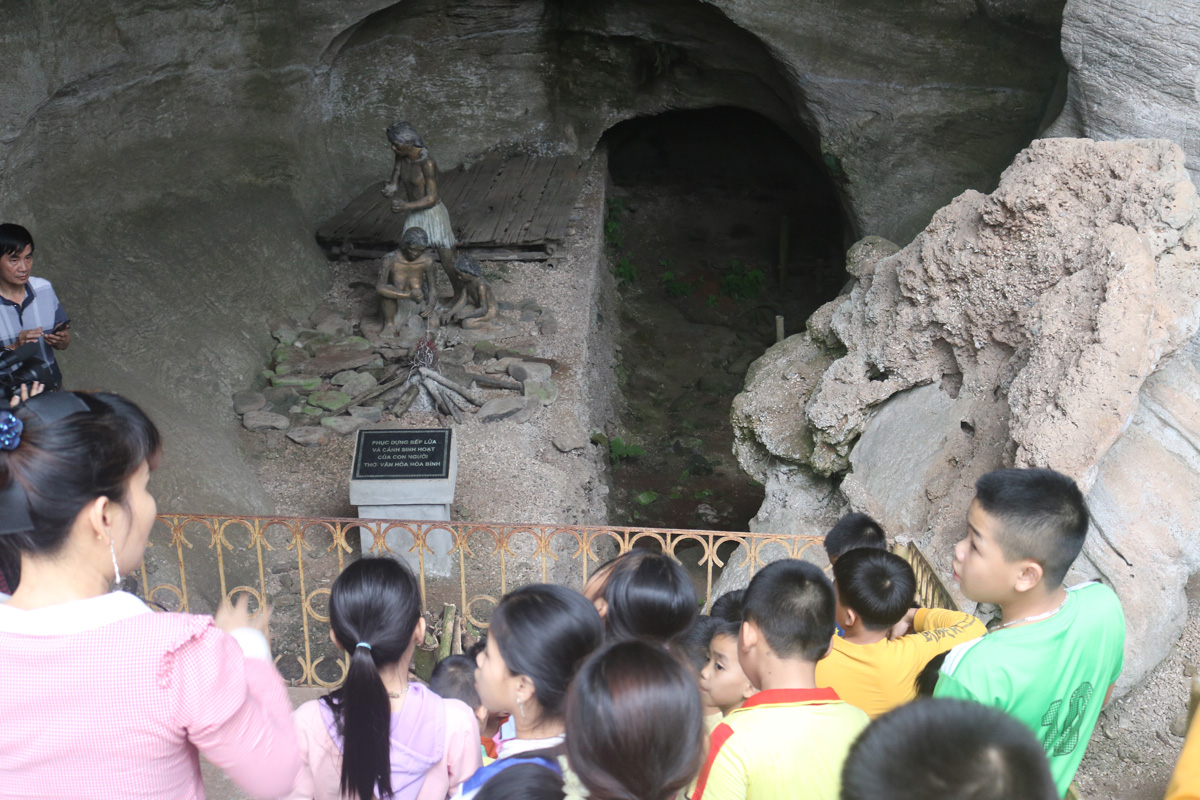
(HBO) –Trai cave is one of prehistoric caves related to the Hoa Binh Culture. The relic was ranked as a national historical site by the then Ministry of Culture and Sports (now the Ministry of Culture, Sports and Tourism) in 2001. Since its discovery, the cave has attracted a large number of Vietnamese and foreign scientists.
 Trai cave in Lac Son’s
Tan Lap commune has been preserved to serve tourism and studying activities on the
Hoa Binh Culture.
Trai cave in Lac Son’s
Tan Lap commune has been preserved to serve tourism and studying activities on the
Hoa Binh Culture.
Located on the east side of an independent mountain on the
bank of Lan stream, the 13m-deep cave has an arc-shape mouth of about 8m wide
and 10m high. The cave is filled with sunlight and clear air during daytime.
According to Nguyen Thi Thu Hien from the Hoa Binh museum,
the cave houses traces of the Hoa Binh Culture, the earliest of its type in the
Red River basin. Since its discovery in 1975, various research and excavations have
been conducted here, which unearthed over 5,000 artifacts. Most of the artifacts
are shells of stream snails, tools and pieces of pottery, and rice, among
others, which are the clearest evidence of a primitive wet rice farming in the
Hoa Binh Culture.
In 2008, preservation work was conducted in the relic to
serve both tourism and research purpose. In the coming time, together with a project on building an eco-urban,
resort, and high-end entertainment complex in Tan Lap’s Quy Hoa commune, the
cave will be further renovated to become an attractive tourist destination.
Meanwhile, locals will be trained to turn local specialties into tourism
products./.
The clothing of women reflects the culture of the Muong, Thai, Tay, Dao, and Mong ethnic groups in the northern province of Hoa Binh.
Gongs hold a special place in the cultural and spiritual life of the Muong ethnic people in Hoa Binh province. More than musical instruments, they are an indispensable part of community rituals and collective memory, echoing through generations as a spiritual thread linking the past, present, and future.
Preserving and promoting the cultural values of the Muong ethnic group has become an urgent task in the current context, as many traditional values face the risk of fading away. This effort requires not only protecting the cultural identity but also eliminating outdated customs and developing a modern cultural lifestyle, contributing to sustainable values for the Muong community in Hoa Binh province.
The Muong ethnic culture, deeply rooted in Vietnam’s mountainous north, continues to be preserved and revitalised by dedicated individuals and communities determined to safeguard their ancestral identity.
The Muong group is one of the largest ethnic minorities in Vietnam, primarily found in Hoa Binh province. The Muong people in Hoa Binh boast a rich and diverse cultural treasure that reflects the unique identity of this ethnic group. Accounting for over 63% of the province's population, they have created and preserved numerous distinctive cultural values, contributing to their unique identity. Their cultural heritage is an invaluable asset, at the heart of their national identity, and represents a vibrant spiritual life that must be preserved and promoted in today’s modern world.
For generations, the ethnic communities of Hoa Binh province, particularly the Muong people, have preserved vibrant festivals deeply intertwined with the region’s geography, nature, and social traditions. These celebrations enrich Hoa Binh’s spiritual life and cultural identity, reflecting both folk beliefs and the intermingling of ethnic customs. Many of these festivals have endured the test of time, passed down through generations and continuing to thrive today. Among them, the Khai Ha (Going Down to the Field) festival stands out as one of the most significant events of the Muong ethnic group.



 Trai cave in Lac Son’s
Tan Lap commune has been preserved to serve tourism and studying activities on the
Hoa Binh Culture.
Trai cave in Lac Son’s
Tan Lap commune has been preserved to serve tourism and studying activities on the
Hoa Binh Culture.